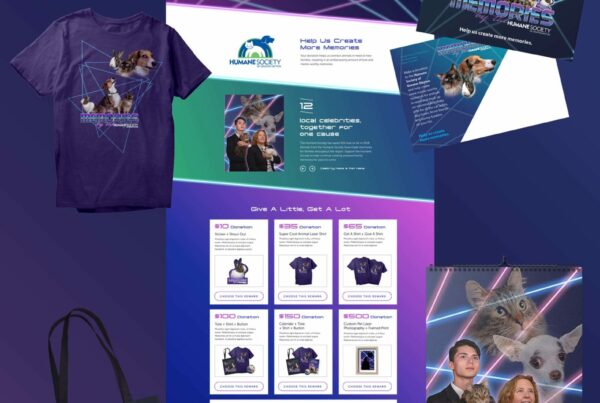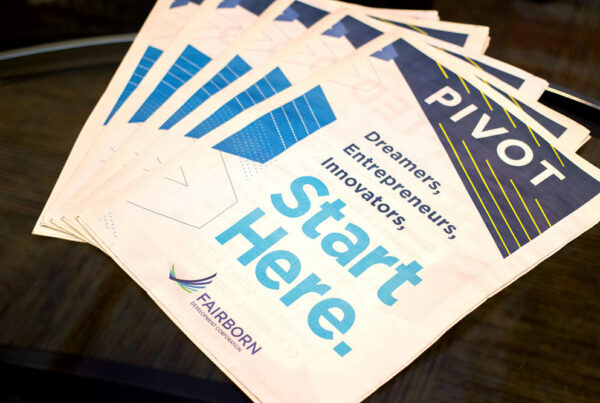
The traditional office, the traditional relationship between employer and employee, and the 9 to 5 grind will become obsolete. We need to accept the concept of remote workers.
Wilderness Agency holds independence and work-life balance high on our list of priorities. We like to say that your time-off is unlimited as long as the work gets done. We have team members who never come into the office, some who do, and some who live thousands of miles away. A team member’s location does not determine their work ethic or the quality of their deliverables. Remote working can even build responsibility and accountability in a tenacious team member.
“It’s a misconception that remote workers are lazy or not as productive or don’t get as much done. Trust is so important. If you have relationship mistrust and you require your team to be in front of you so you can stare over their shoulders and look at their computer screens, they’re also not going to operate with a level of trust. In a remote environment, you have that trust and people are generally getting more work done. They’re more productive and are able to succeed.” — Greg Caplan
It takes a special team to make the remote workplace work, however. Commitment to connecting is essential and the team’s dedication to the company mission drives the success of a hybrid work model.
Let’s Review the Numbers
The number of remote workers is increasing. Remote working is becoming popular in the US. More and more workers in the US are adopting a remote style of working.
 No wonder that 52% of survey respondents, as published by Harvard Business Review, indicated that they worked from their home offices at least some times. In fact, Walden University conducted a recent study and found that the number of remote workers has increased by 80% over the last decade.
No wonder that 52% of survey respondents, as published by Harvard Business Review, indicated that they worked from their home offices at least some times. In fact, Walden University conducted a recent study and found that the number of remote workers has increased by 80% over the last decade.
Most remote workers feel disengaged. Employee disengagement is not only limited to just remote workers. It even cuts across all types of employees. This can be seen from numerous studies stating that about 68% of U.S. employees are totally disengaged with their work. Narrowing this down to remote workers, you could find that disengagement is a current issue in the US, as more than half of the nation’s disengaged employees work remotely. This contributes to about $550 billion in the annual costs of employee disengagement to businesses.
Mistreatment towards remote workers. When employees work remotely, they always feel that they don’t receive equal treatment from their colleagues. Also, they are more likely to report that they are being mistreated. According to the Harvard Business Review, 52% of the respondents said that their colleagues don’t treat them equally when they work remotely from their homes. They worry that coworkers say bad things behind their backs or make changes to projects, lobby against them, and don’t fight for their priorities.
Remote workers can still be productive after all. Remote workers, despite the troubles and the disengagements they are having in their workplaces, can still be productive. A study by Walden University shows that remote workers are more productive than their traditional in-office colleagues, cheaper to maintain, and greatly increases the hiring options for organizations. The same study shows that remote workers feel better workplace engagements when they have a personal connection to their work environment and a work culture that they are familiar with.
Managers need to show more affection towards remote workers. Managers need to show more affection to remote workers because they tend to perform better that way. A report by Harvard Business Review shows that about 46% of remote workers said that the most successful managers checked in frequently and regularly with remote employees while 25% said that managers who insisted on some face time with remote employees were more successful.
Tips for Remote Engagement
Communicate, Communicate, Communicate
“In teamwork, silence isn’t golden, it’s deadly.” — Mark Sanborn
This can’t be stressed enough. Remote workers should always communicate seamlessly across teams. This can be done by keeping the remote team members in the loop and sending regular updates, announcements, and reminders by email. Companies must keep the remote workforce up-to-date on company matters through regular newsletters, Slack, or chat. This is essential to keep the team on the same page of progress. Companies must keep the lines of communication open for all the remote workers across different time zones, for example, when setting meeting times or sending emails.
The autonomy of remote workers should be respected so that they feel on par with non-remote team members. Companies need to focus more on accomplishments. Regular communication can engage the remote team to engage better with the company goals. Remote workers should be connected to their colleagues doing similar work. Frequent team meetings should be organized to foster a sense of being connected and belonging among remote workers.
Another important aspect is the communication from managers. Managers must have to show exemplary communication skills. Charity, they say, begins at home. Managers should communicate trust and respect, inquire about workload and progress without micromanaging, and over-communicating. It also enables others on the team (non-remote workers) to learn and pick up the same behavior.
Remote workers should be provided with all the required materials, equipment, and information that they need to succeed. Prioritizing user-friendly learning has proven to increase engagement across the board.
Schedule Check-In’s
Regular check-ins with remote workers are one of the biggest things to throw in as they deserve as much contact as anyone based in the same building. This can be done through regular calls, emails, instant messaging. Frequent and consistent check-ins are also very important too. About 46% of remote workers feel that the most successful managers checked in frequently and regularly with their remote employees. The frequency of the check-ins varied from daily to weekly, and even bi-weekly.
In the same vein, scheduling frequent check-ins enables two-way communication for the managers and team. A one-on-one video or chat session about progress and feedback improves workforce engagement and enables the manager to focus on the right direction for the team and the project.
Speaking of managers again, they should always be available for the team no matter their time zones as seen with successful managers. This further enables an open-door policy for both remote and on-site employees. Also, remote employees should always be able to count on their manager to respond to pressing concerns, no matter where they work.
Companies can also keep things predictable. They should adopt a clearly articulated program of deadlines that allow employees to work independently. And make workplace relationships a priority by using the check-in time to ask about remote workers’ personal life, families, and hobbies. They can throw in the team meeting time for ‘water cooler’ conversations to create personal connections and strengthen relationships. Recognizing their strengths, weaknesses, and interests to better connect with them can also help in fostering personal connections.
Take Advantage of Tech
Digitizing the office culture is a very important engagement tactic for remote workers. It enables them to feel connected with those in the office. Some examples of digital engagement include employee photo-sharing contests, birthday celebrations, etc.
Additionally, adopting a dedicated collaboration tool over an in-house, hyper-secure intranet could make remote employees feel more included in the entire ecosystem. Tools like G-Suite and Slack – two of our favorites, along with Vogsy and Bugherd – enable documents and reports management from any location and could also prove to be a wise investment.
A mobile-responsive Learning Management System (LMS) can be used. This is one of the most important factors in learner engagement and provides the flexibility to train learners. It doesn’t matter if they are based on a mobile, tablet, or PC. Also, allowing anytime-anywhere access through virtual learning is vital for engaging a geographically diverse workforce.
Make the most of the tools available…because no one wants to read an email chain.
Increase Collaboration
As remote workers are already working from distant locations, it is extremely important to not isolate any team members. We recommend video interaction over traditional phone calls, texts, or chats for the purpose of engaged discussion. The use of face-to-face or voice-to-voice contact is very important because 1/4 of remote workers feel that managers who insisted on some face time with remote employees are more successful. With voice calls, there is lower engagement, but video calls give group members the confidence to engage more.
To create spaces for employee interaction, gamification and leader boards can help tap into the naturally competitive nature of the remote workforce. It encourages engagement through small-scale goal setting (rather than cutthroat competition). Team-based goals and competitions assist in creating an atmosphere of collaboration and cooperation. Teams can be formed based on function or location and inclusion in working towards a common objective.
Recognition Counts
Remote workers, just like their in-office colleagues, and their efforts should be rewarded and recognized. Companies should make a concerted effort to highlight the accomplishments, ideas, and milestones during a team meeting or through a formal email announcement.
Always remember to show appreciation with instant feedback. Prioritizing remote engagement is essential for getting feedback and suggestions. This can be done by relying on virtual feedback systems where participation and outcomes are assessed, with objectivity. Announcing the implementation of new tools and resources based on feedback helps to maintain the positive morale of the team and gives the sense that they are being heard and appreciated.
Make Expectations Clear
Managers should be clear and concise about expectations. Managers who are direct with their expectations of both remote and on-site employees have happier teams that can live up to those expectations. Clear expectations can create a culture of accountability by giving the team effective collaboration tools. Clarifying expectations also shows that the company pays attention to, comprehends, and respects the job role and wants to help remote employees succeed.
Welcoming Creative Problem Solvers
Wilderness Agency is a team comprised of both full-time and freelance employees that push creative limits daily. More than anything, we value adaptability and education for all team members. If you are willing to step out of your comfort zone and create incredible work with the support of our team, then you will fit right in!





